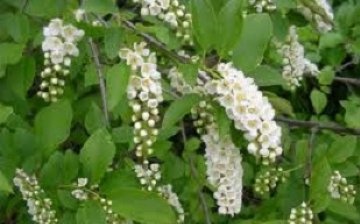Bird cherry
For decorative landscaping, many beautiful trees, shrubs, and also herbaceous plants are used. Bird cherry takes a special place among them, since, in addition to its decorative value, it performs the function of a honey plant, and is also a valuable medicinal plant.
There are about 20 species of bird cherry, however, only bird cherry and Virginia bird cherry are widespread in Russia.
A multi-stemmed tree, the height of which ranges from 4 to 6 meters, is called common bird cherry or carpal, since its inflorescences resemble brushes. Each inflorescence has 20 to 40 large flowers.
Bird cherry is a shrub with a height of 2 to 4 meters. Unlike the previous type, the inflorescences consist of small flowers, while in one brush there can be from 40 to 80 pieces.
Bird cherry is a frost-resistant plant. It is recommended to plant this tree in early spring or autumn. When planting several trees or bushes, a distance of at least 4 meters must be observed.
Having dug a hole sufficient for the roots of the seedlings, both mineral and organic fertilizers should be applied.
Bird cherry care consists in watering, digging up the soil, as well as removing weeds near the plant. During the summer season, bird cherry is watered abundantly only 2-3 times, however, in drought, more frequent watering is recommended. The soil is usually dug up once or twice, and the weeds are removed as they appear.
As the branches of the bird cherry grow, they are shortened by a third of times a year until they reach ten years of age.



